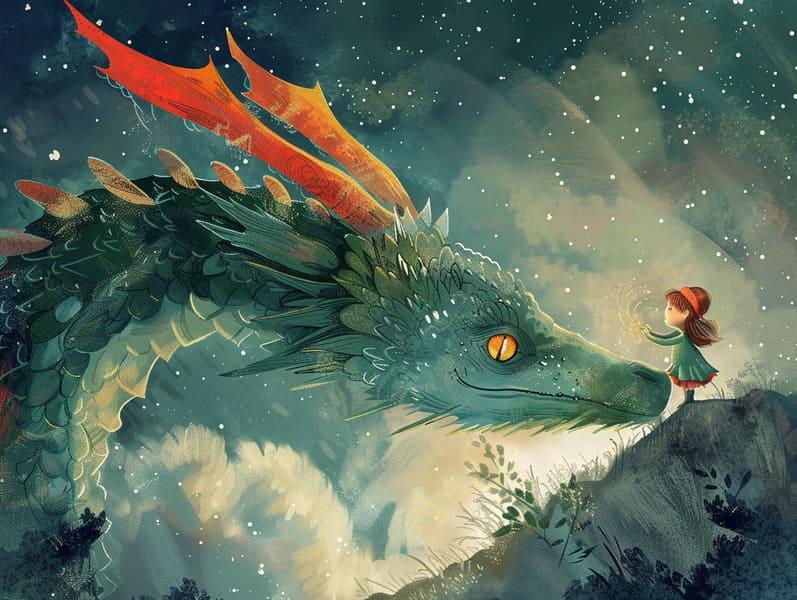The Start of Bedtime Fairy Tales and the Unchanging Captivation.
The Start of Bedtime Fairy Tales and the Unchanging Captivation.
Blog Article

Children's fairy tales have timeless appeal. These narratives have been spoken from one generation to the next ages before they were ever recorded. They came from a variety of societies, including Eastern traditions. They were initially shared among mature audiences, often carrying themes and messages concerning the societal norms and beliefs of the time.
The famous Grimm duo, Jacob and Wilhelm (the Grimm brothers), were among the first to collect and release many of these beloved fairy tales. Their collection, "Grimm's Fairy Stories," included tales like "The Story of Cinderella," "Little Brother and Little Sister," and "The True Story of Snow White," which have since become cornerstones in the world of classic fairy tales. Similarly, Andersen's charming stories, such as "The Little Mermaid," and "The Ugly Duckling," have captivated hearts worldwide, cementing their place in the pantheon of famous fairy tales.
Despite their ancient origins, these tales remain as important as ever, especially as bedtime stories for kids. These fantastical tales are now available in different formats, including vividly illustrated books, magical animations, and online fairy tales.
Their continued relevance can be credited to several captivating elements:
Moral Lessons: Traditional fairy tales often impart important moral lessons. Tales like "The Tale of the Boy Who Cried Wolf" teach the importance of sincerity, while "The Race of the Tortoise and the Hare" illustrate the virtues of steadfastness and humility. These stories offer young readers clear distinctions between moral and immoral, helping to shape their moral compass in a soft yet profound way.
Compassion and Insight: Traditional fairy tales frequently present beings facing challenges and struggles, stimulating young readers to resonate with their struggles and support their triumphs. For instance, "The Tale of Beauty and the Beast" illustrates the merit of looking past the exterior to know the true character of a soul, enhancing compassion and recognition.
Cultural Perception: Many ancient fairy tales are infused with the cultural contexts from which they came. Learning from these narratives can provide delightful insights into different societies, promoting a sense of world appreciation and recognition.
Creativity and Imagination: The fantasy-filled elements in classic fairy tales—magical kingdoms—unleash children’s dreaming abilities. These tales bring readers to enchanted realms, encouraging imaginative ideas and a sense of magic that persists a lifetime.
Ancient fairy tales are not only whimsical but also illuminating. They act as spellbinding tools in enhancing various cognitive and emotional skills in young readers. When fairy tales are recited, they strengthen linguistic abilities check here by offering new lexicon and detailed sentence structures. This practice also develops auditory perception and attention, as young ones remain attentive, enthusiastic to see what happens next.
Furthermore, examining the themes and characters of ancient fairy tales can sharpen thinking skills and intellectual skills. Children are educated to recognize patterns, guess what will happen, and know cause and effect. These deliberations also support young ones utter their thoughts and feelings, enhancing their emotional intelligence.
In today’s modern era, the availability of web-based fairy tales has made these fairy tales more obtainable than ever. Online resources and digital apps offer huge assortments of traditional fairy tales that can be explored or listened through anytime, anywhere. Fairy tales told out loud are particularly widespread, featuring an charming way for little ones to engage with these delightful tales. Voice books and read-aloud videos carry characters and settings to life, often augmented by mesmerizing melodies and harmonies that enrich the story adventure.
The timeless charm of ancient fairy tales lies in their ability to alter to today's society while maintaining their core messages. Contemporary renditions of these fairy tales often include more varied protagonists and modern settings, making them understandable to today’s audience. However, the main ideas of braveness, compassion, and fair-mindedness remain unchanged, continuing to resonate with readers of all ages.
Classic fairy tales also offer a sense of solace and recognition. They offer a coherent narrative with a apparent beginning, middle, and end, often closing with the termination of conflicts and the triumph of virtue over wickedness. This consistency can be relieving for kids, showcasing a sense of dependability in an unpredictable world.
Ancient fairy tales continue to captivate and train new generations, maintaining their grandeur and meaningfulness in modern society. As nighttime stories for kids, they showcase a perfect blend of allure and teaching, developing moral values, empathy, and creativity. The proliferation of free fairy tales online and the sought after status of fairy tales narrated make sure that these old narratives remain available to new generations.
By preserving and spreading these fairy tales, we continue to treasure the rich tapestry of fables and cultural heritage. Whether you are experiencing a vibrantly illustrated book, exploring a cyber library, or hearing an audio story, the beauty of bedtime fairy tales is always within reach. These narratives illustrate of the unwavering spell of stories and its ability to bring us together across eras and regions.
Be it you are experiencing a artistically illustrated book, enjoying a online library, or listening via an narrated book, the grandeur of Grimm's fairy tales is always within reach.
These narratives show us of the ageless influence of fairy tales and its ability to join us across epochs and places, establishing a link that fascinates and enlightens alike.